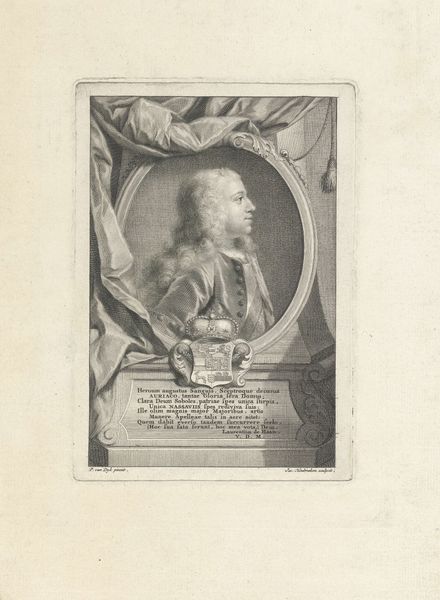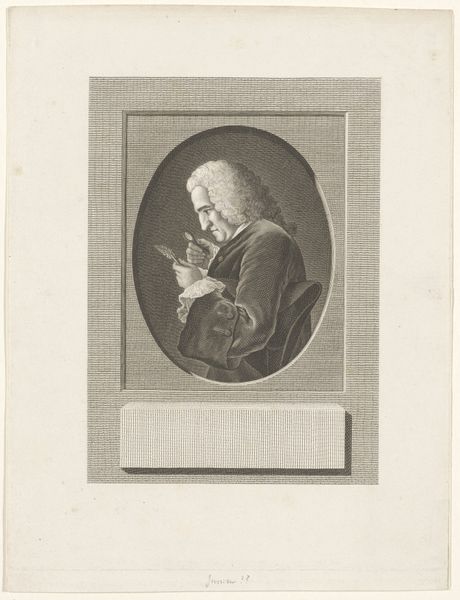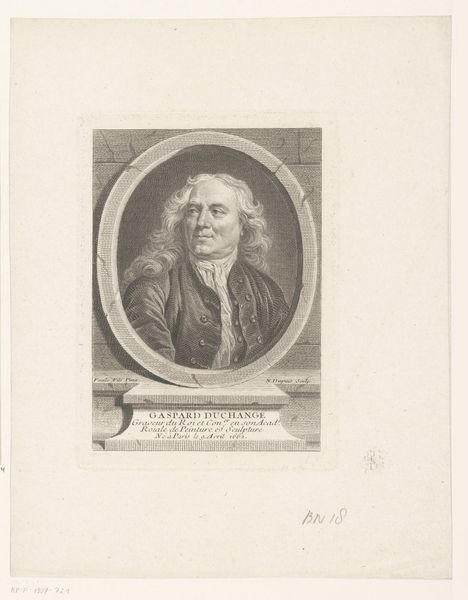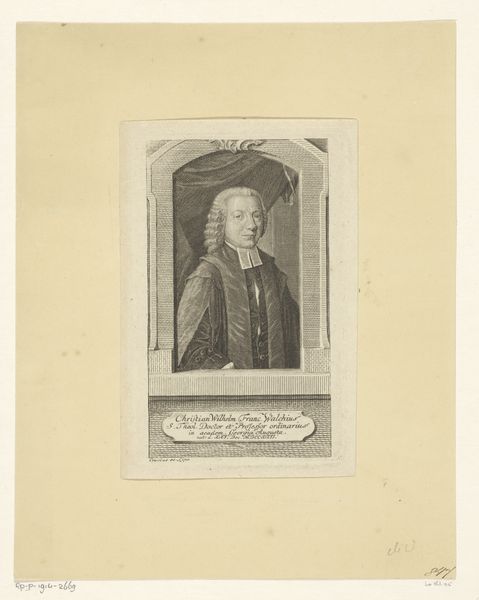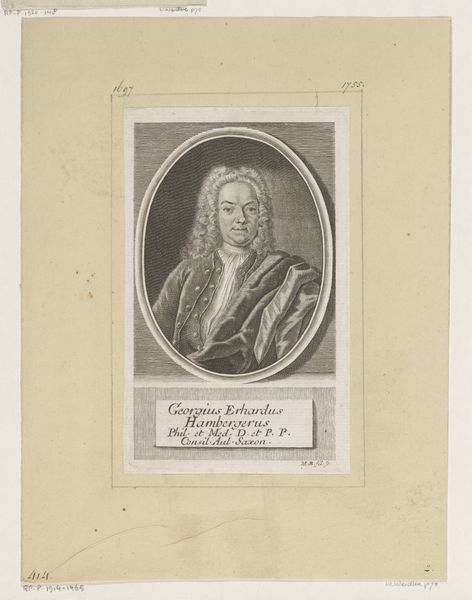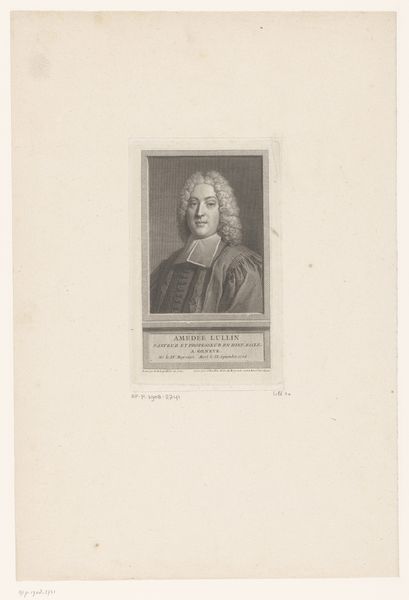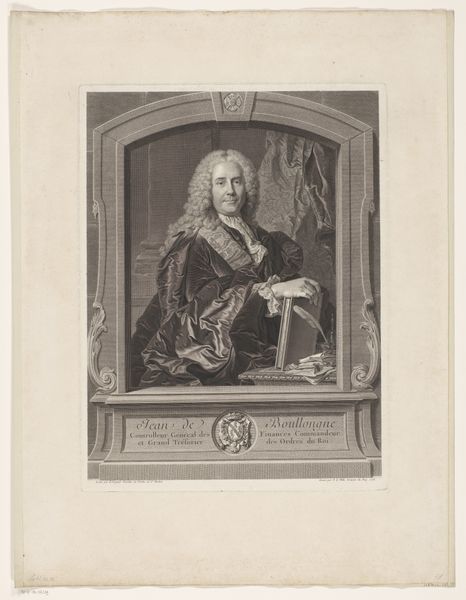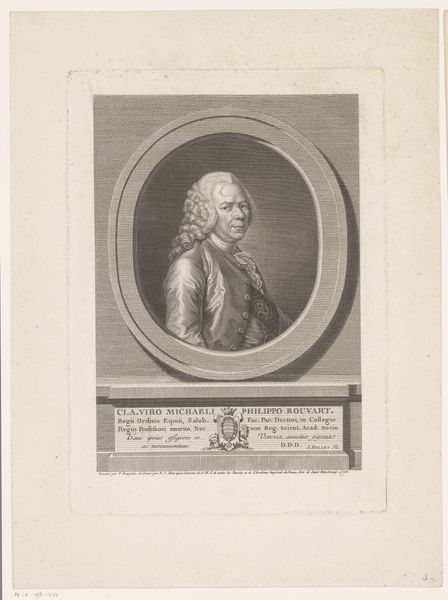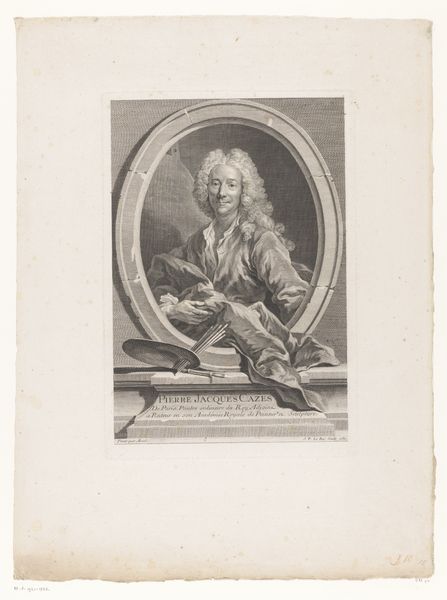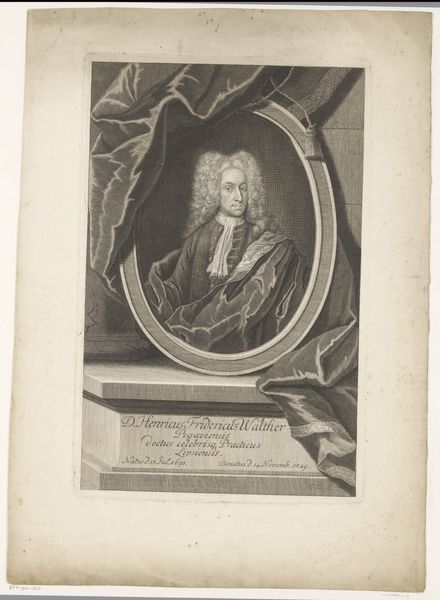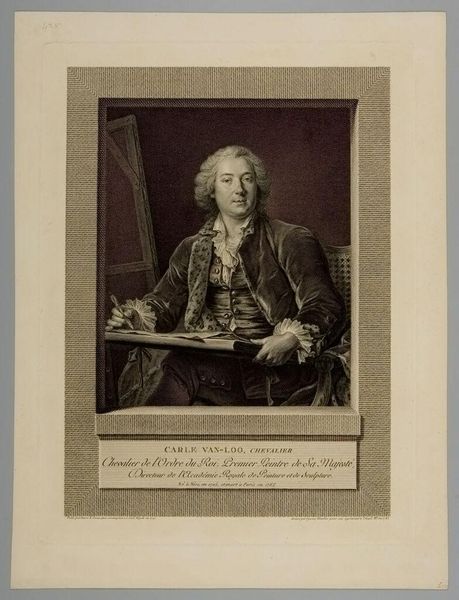
Dimensions: height 371 mm, width 258 mm
Copyright: Rijks Museum: Open Domain
Editor: This is Louis Simon Lempereur’s 1775 engraving, “Portret van Etienne Jeaurat,” housed here at the Rijksmuseum. The way the subject’s pose leads our eye directly to the tools in his hands, a tool that brought the world works of art we treasure. What stands out to you, in terms of its cultural memory? Curator: It's striking how Lempereur positions Jeaurat within this almost architectural frame, doesn't it? The inscription becomes part of the image itself, blurring the line between portrait and monument. Do you notice how this formal presentation—the wig, the gaze, the inscription, even the unfinished sculpture in the background— collectively speak to ideas about status and artistic legacy? Editor: Absolutely. It feels deliberate, crafting an image of artistic authority. But I'm curious, is there more to be found in the context? The way one artistic generation sees those that came before? Curator: Precisely! Notice the inclusion of the tools and incomplete sculpture, not quite symbols of creation, but of *labor.* What are your immediate thoughts when seeing the implements? Editor: A sense of intimacy? He wants to reveal more of the artistic process? Or at least the "vibe" of being an artist? Curator: Or perhaps to dignify that process. Before romantic notions of artistic genius took hold, artists were craftspeople. Images like this helped to elevate their status, associating them with intellectual pursuits and cultural production, to build memory. Editor: So it's less about the man, Jeaurat, and more about building a cultural idea of what an artist *is*. That's fascinating! Thanks for making this portrait more than just an image! Curator: My pleasure. Each detail adds layers to the narrative, transforming a simple portrait into a powerful statement about artistic identity. There’s always more than meets the eye!
Comments
No comments
Be the first to comment and join the conversation on the ultimate creative platform.

